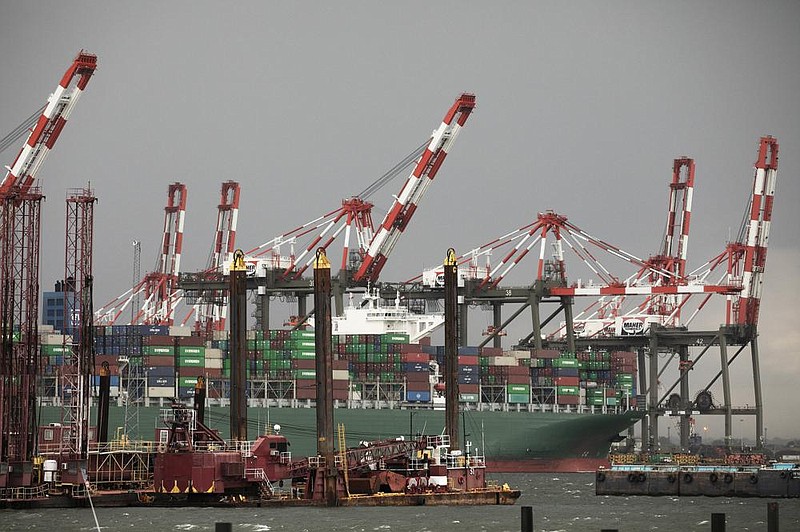WASHINGTON -- The U.S. trade deficit rose for the third straight month in May. Both exports and imports fell as the coronavirus outbreak continued to take a toll on world commerce.
The Commerce Department said Thursday that the gap between the goods and services the United States buys and what it sells abroad rose 9.7% in May to $54.6 billion, the highest since December 2018. The median estimate of economists surveyed by Bloomberg had called for a widening to $53.2 billion.
The pandemic has devastated world trade. U.S. exports fell 4.4% in May to $144.5 billion, the lowest since November 2009. Imports slid 0.9% to $199.1 billion, the lowest since July 2010.
The politically sensitive deficit in the trade of goods with China rose 7.3% to $27.9 billion in May.
So far this year, the overall U.S. deficit in the trade of goods and services has fallen 9.1% to $223.4 billion from $245.7 billion in January-May 2019.
[CORONAVIRUS: Click here for our complete coverage » arkansasonline.com/coronavirus]
World trade has plummeted in the face of the covid-19 outbreak. In May, the combined value of U.S. exports and imports came in at $343.6 billion, down 28% from May 2019. Exports of crude oil and petroleum products dropped sharply in May, as did auto imports.
In May, the United States ran a $76.1 billion deficit in the trade of goods such as autos and appliances. But it ran a $21.5 billion surplus, the smallest since February 2016, in the trade of services such as banking and education.
The data show exports of industrial supplies and materials, which include oil products, decreased $3.9 billion. Imports of automotive vehicles, parts and engines declined $4.4 billion.
The world's largest economy has pulled back sharply since the outbreak began amid a surge in U.S. unemployment, a slump in consumer demand and a slowdown in international travel. Tensions between the U.S. and China have also been escalating, with President Donald Trump blaming Beijing for misleading the world about the scale and risk of the disease.
At the same time, China has stepped up global corn purchases after issuing more import permits, according to people familiar with the matter, setting the country on a path to meet or exceed its World Trade Organization commitment for the first time.
China purchased at least 10 cargoes in the past two weeks after issuing another batch of permits that allow imports at lower tariffs, said the people, who asked not to be identified because the information is private. It's possible that if all the permits issued by China in this latest round are filled, total low-tariff imports will top the WTO quota of 7.2 million tons, two of the people said.
The corn can come from any producing country acceptable to China, but will most likely be shipped from the U.S. or Ukraine given prices, one of the people said. The purchases could also help Beijing meet its commitment under the phase one trade deal with the U.S., with China so far sticking to its plan to accelerate imports of American farm goods after talks in Hawaii despite rising tensions.
China's been under pressure to fulfill its import quotas set by the WTO, which also include rice and wheat. The country last year lost a dispute brought by the U.S. that argued the quotas were not being administered fairly, creating a hurdle for exports to the world's second-biggest consumer of corn.
Information for this article was contributed by Paul Wiseman of The Associated Press and by Elizabeth Dexheimer of Bloomberg News.
